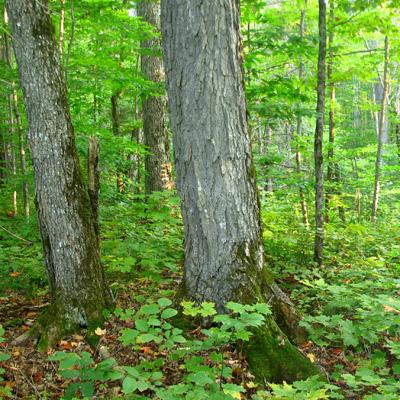Developing Management Guidelines for Conserving Late-Successional Forest in the Northern Forest Region

Next to forest habitat loss, the loss of old, or late-successional (LS), forest may represent the major global threat to temperate forest biodiversity. Conservation of LS forests in the Northern Forest region is crucial for survival of certain species and ecological processes. Conservation lands occupy only a small percentage of the Northern Forest and so occupy too little area to fully conserve LS forest biodiversity. The greatest opportunity to conserve LS forests lies on private lands, but private forest land managers currently lack the tools to effectively conserve LS forests and meet regional economic needs.
Collaboratively using science and data from the region, NSRC researchers developed forest management guidelines to help land managers manage and conserve LS forests in the Northern Forest region. First, they reviewed regional scientific literature and identified the unique compositional elements, forest structure, and functions of LS forests. Then, they analyzed data from old growth forest study sites in Maine, New Hampshire, Vermont, and New York to identify LS attributes that are likely to maintain LS and old growth species, structures, and ecological processes. Lastly, they evaluated timber harvest studies in Maine and New Hampshire to identify LS attributes associated with different silvicultural systems, rotation lengths, and levels of retention.
LS forests contain unique attributes, including large trees, large snags, large logs, and moss, lichen, and invertebrate species. In training workshops, researchers describe how forest managers can maintain these attributes using alternative forestry practices such as structural retention, long-rotation forestry, and restoration forestry.
Download printable version [PDF]
Download full final report [PDF]
